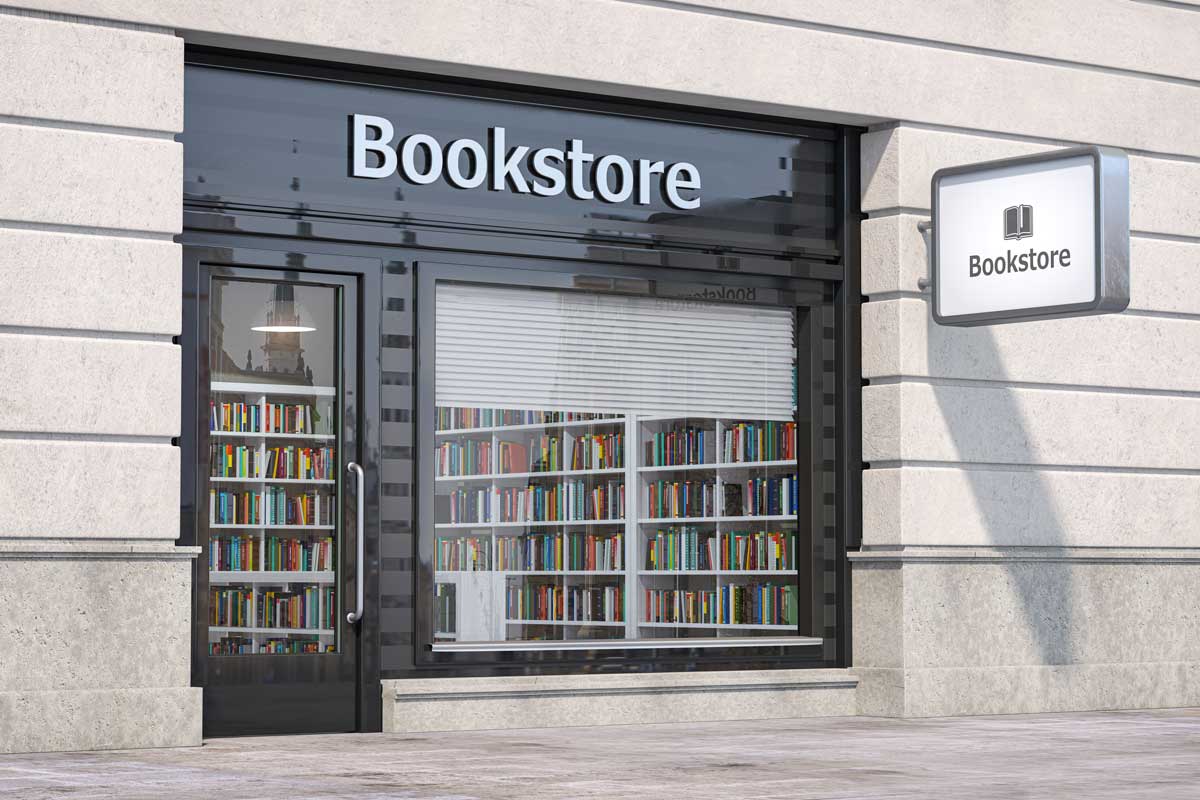If you have read my other posts, you know I have a thing for selling books on Amazon. It’s how I got started selling on Amazon and selling books is a great way to make money on the world’s largest online book store.
I’ll let the cat out of the bag and share some really helpful tips to help you succeed in selling books online.
In this selling books on Amazon guide, I share my expert advice so you can save time and maximize your earnings with online arbitrage.
We also showcase my favorite sourcing tool Tactical Arbitrage. It is designed to help sellers find new and used books on Amazon to flip.
So let me teach you everything you need to know about selling books on Amazon. Let’s get to it.
How to Sell Books On Amazon
Books are a low-risk way to get started on Amazon. Once you’ve decided that flipping books is how you want to make money online, your next step is to familiarize yourself with the process of generating sales.
Amazon is the world’s leading online retailer with top-notch customer service and an extensive network of fulfillment centers. The platform offers an easy and convenient way to make money since they take care of the marketing and shipping for you (if you use their FBA services)..
Overall, the process of selling a book on Amazon is pretty simple. You find a book, list the book, sell the book, and ship the book. Obviously there is more to it than that, but you get the general gist of the idea.
Below I take you through a more in-depth look at the process.

Step-by-Step Process for Selling Books on Amazon
Step 1: Find Books to Sell
You can either sell new or used physical books. Finding either new books manually can be quite challenging for beginners.
You’d have to source your inventory from book stores, distributors, wholesalers, or even the publishers themselves. Some of these distributors of books often require a huge investment for orders (about 4 to 5-figures worth) every month.
Finding & selling new books from other bookstores or even other Amazon sellers is an option for many.
Check out Tip #1 below for leveraging Tactical Arbitrage to help you source and sell books on Amazon.
Used books on Amazon are often the best option for beginners because you can easily find them online with Tactical Arbitrage or you can find them locally using the Amazon Seller app on your phone.
You can look for used books in a several other places, such as:
- Thrift stores
- Auctions
- Estate Sales
- Facebook groups/marketplace
- Bulk buying on eBay, Craigslist, Facebook, etc.
- Amazon (Yes, I know it called Amazon to Amazon Flips)
- Retail & Online arbitrage (find deals on other ecommerce platforms that sell books at lower prices than Amazon)
So, what types of books can you sell?
You can sell new and used textbooks, niche books, rare find books, old editions – basically old books of all types. I love selling used books, especially textbooks, but all of these types of books are out there and just waiting to be flipped for a profit.
Step 2: Create An Amazon Seller Account
Finding a book is one thing, but you need to actually sell it to make a profit. You’ll need an Amazon Seller account for that part of the equation.
Amazon FBA charges fees for selling on their platform according to the type of seller account you have. You have a choice between two options: An individual Seller Account, and a Professional Seller Account.
Individual Seller Account
With this account type, you can start selling books on Amazon for free. You won’t be charged any monthly fees, but you will be required to pay $.99 for each item sold.
There are also additional selling fees for selling books, including a referral fee, closing fee, etc. If you are someone who sells less than 40 books a month, this type of account can work out really well for you.
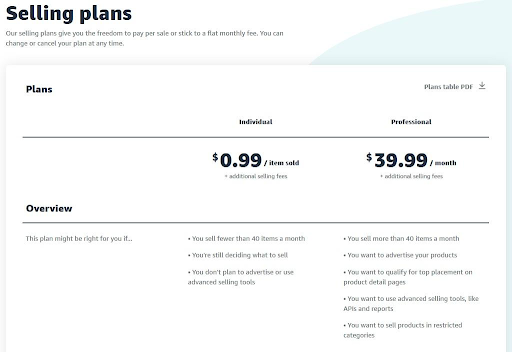
Professional Seller Account
A Professional Seller Account will set you back $39.99 per month, and there may also be additional charges.
To set up your account, you need your business name and address, as well as your contact information, credit card, and banking details.
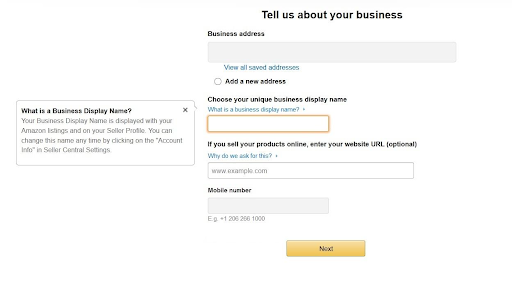
If you work with a larger inventory of books, this is the better option for you.
With a Professional Seller account, you don’t need to pay fees for individual items sold, just one flat monthly fee. You also get advanced selling tools to help you optimize your sales strategy on Amazon.
Step 3: List and Ship the Books
Once you’ve found the books to sell, your next step is to list them on Amazon through your Amazon Seller account. You take the ISBN number and you find the book in their catalog.
Once you find it, you select the condition of your book and the price.
You will also have to select a shipping method for selling books. You can choose to ship the book to the customer yourself (FBM) or ship your books to Amazon and have them handle the process (FBA).
As a beginner, the best option is to ship with FBM (Fulfillment by Merchant). With this option, you will be responsible for the packing and shipping of all your orders.
The workload should be easily manageable since you’ll only keep a small inventory and have few orders to fulfill.
Just keep in mind that if you choose FBM, then you will be handling everything yourself, including customer service.
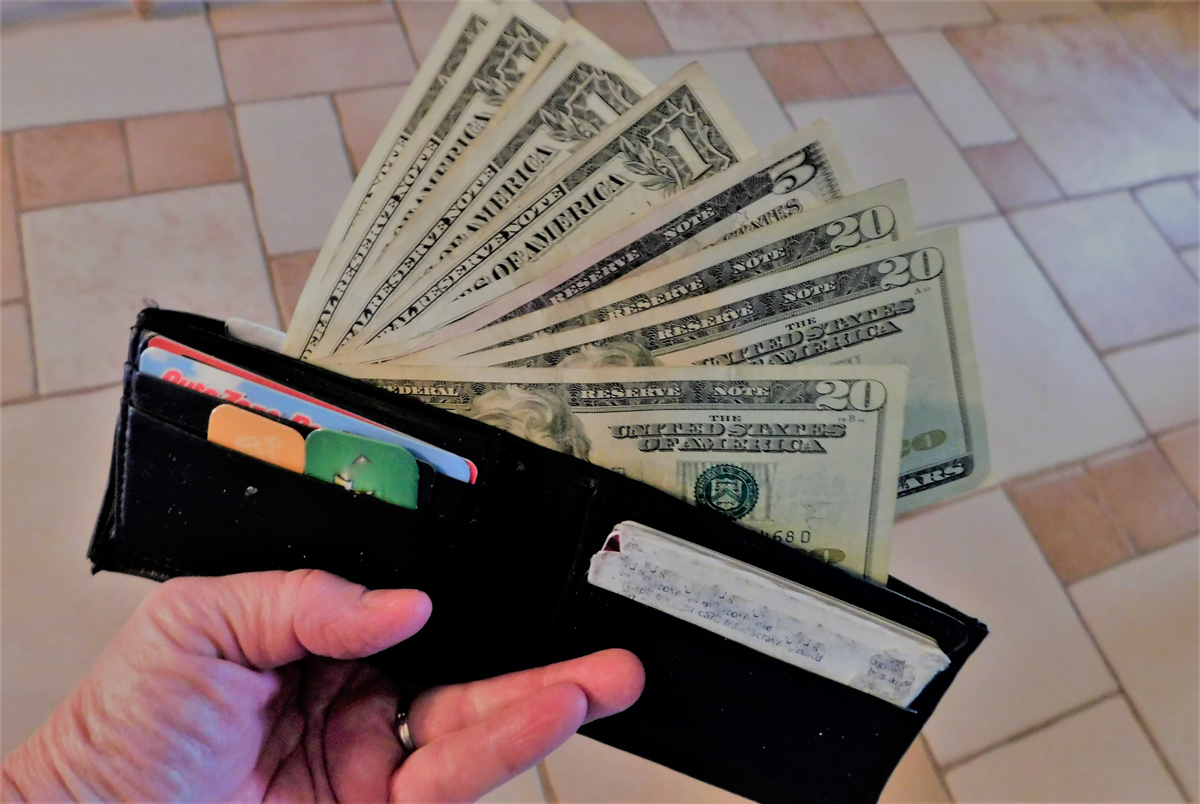
Amazon FBA is a Good Option as Well
You can shift to Amazon FBA for selling on Amazon if you got your feet wet with FBM.
This Amazon FBA model is more convenient for established sellers because it outsources all your shipping tasks and frees up more of your time so you can focus on sourcing more books to sell on Amazon.
Here are some more benefits to choosing FBA:
- Ease and Convenience: Amazon ships books on your behalf. The company handles all customer service issues
- Prime Shipping: All your products are eligible for Amazon Prime shipping – a customer favorite since Prime is much faster and includes shipping costs
- Buy Box Priority: Your books get priority over Fulfilled by Merchant products for the Buy Box
- Cost-Effective and Scalable: FBA is a cost-effective and scalable option for medium-sized and large-sized Amazon sellers
After everything is filled out, you list it and wait for a sale.
Once a sale hits, you need to ship the order (FBM) or wait for Amazon to do it (FBA).
It’s as easy as that! Find, list, ship, and repeat. Easy-peasy selling.
Quick Note About Amazon FBA
You can sell used books on Amazon as well as new books using the FBA program. You may win the buy box more if you use the Amazon FBA program if all things are equal.
A Word of Advice on Pricing
On the product page, Amazon displays the price range listed for the book. These prices are a great starting point and you can use them as a guide.
But you should always figure out your potential profit using Amazon’s calculator before hitting the “Publish” button. Play around with the cost calculator so you will know what works best for you. This is a crucial step if you want to maximize your earnings from Amazon book sales.
And remember, your price is also important because if you can price your books right, you stand a chance to win the Buy Box, so that whenever someone clicks on “Add to Cart” they will be buying your book.
25 Tips & Secrets For Selling Books On Amazon
In this section, you will discover 25 tips and tricks to help you improve every aspect of your Amazon bookselling business.
To make things easier for you, I’ve broken down the section into four segments:
- Tips and Secrets to Find Book Sources
- Tips and Secrets to Source Books
- Tips and Secrets to Prep Books for FBA
- Tips and Secrets to Increase Your Sales
Let’s dive into more detail on each of them.
Tips and Secrets to Find Book Sources
1. Online Arbitrage
Online arbitrage allows you to buy books from one marketplace at a lower price, and sell them on another, in this case, Amazon, for a profit. This method is obviously one of the best ways to find books to resell since it doesn’t limit you to a geographical location.
Also, you don’t have to put on pants.
In fact, with a tool like Tactical Arbitrage, you will be able to find great products any time, just as long as you have access to a computer.
Currently, it sources books from:
- Amazon.com
- Abebooks.com
- Alibris.com
- Barnesandnoble.com
- Betterworldbooks.com
- Booksamillion.com
- Valorebooks.com.
You can search for books (both new and used) with just a few clicks. And, you can even “set it and forget it”, and the software will carry on with the process of finding new great deals even while you sleep.
There is even a free trial that you can utilize to try it out.
Who knows you might make $50 in an hour if you do it right.
2. Facebook Marketplace
This is a great place to find low-priced book collections and textbooks.
On Facebook’s Marketplace, you will often find full lots of used books that you can purchase wholesale for extremely low prices.
On Facebook, you may also come across people who are looking to offload old books at no charge. They simply want you to go and get them, and that will be your only expense.
However, you need to be careful as sometimes Amazon sellers list free books to get rid of inventory that does not sell (I guess that can be tip 26 for getting rid of your unsold inventory).
3. Craigslist and eBay
When it comes to tips and secrets, experienced sellers often mention Craigslist and eBay as two of the most popular sites to find great deals on books.
But, finding books manually can be a bit time-consuming, particularly when compared with using Tactical Arbitrage to source.
But, once you’ve set up a system for rooting out good deals on eBay and Craigslist, you will find it easier to find awesome books, particularly if you target books that sell for at least $25 or more, such as textbooks, first editions, etc.
4. Check BookSaleFinder.com
BookSaleFinder.com is undoubtedly one of the best websites for sourcing books. It has a comprehensive database of bookstores and book sales across the United States.
On the site, you will find book sales and other various book sources that may prove valuable to your business. They advertise new sales all the time, and you should regularly check the website for new announcements.
You can also check BookSalesFound.com for additional book sources that you won’t find on BookSaleFinder.
This website is a great complement to Book Sale Finder, although you may find a lot of overlap on sales advertised on the two sites.
5. Advertise Locally
Advertise in your local area that you buy books. As a new Amazon bookstore owner, there are many different ways for you to get the word out effectively, such as:
- Advertising in the paper
- Local bulletin boards
- Creating and distributing flyers
- Posting on websites and forums
- Word-of-mouth
- Posting Facebook groups
- Advertising on Craigslist
- Creating business cards to hand out
But, you must be careful about the types of books you get in this way. Make sure they are the type of books that can sell on Amazon.
Most booksellers have found that finding books is usually quite easy, but then they end up wasting a lot of time listing books no one wants to buy.
So don’t grab just any book you find locally, check the Best Seller Rank to determine how likely it is to sell. The lower the BSR, the more often the book sells on Amazon.

6. EstateSales.net
A great way to discover cheap books for your Amazon bookstore is to find estate sales near you. You can use EstateSales.net and other similar websites to help you locate possible book sources in your area.
Estate, closing, or moving sales are great ways to find books to sell since large collections of books are often sold all at once – and at very low prices.
Instead of trying to find deals on individual books, this method allows you to make a deal for the entire lot and it’s not unusual to get entire collections for just pennies on the dollar.
Also, you’re able to qualify potential sales ahead of time, which means you will be able to avoid wasting your time on any estate sales that have poor selections of books.
7. Library Sales (or Dumpsters!)
Library sales are a great place to get deals on books. If you’re lucky, you can also get free inventory from library dumpsters.
Libraries throw away old books all the time. And although this is a weird tip, it’s one that many booksellers have made use of to find awesome books to sell on Amazon for quick and easy profits.
Alternatively, you can establish a relationship with your local library to ensure that they can simply give you the books that they intend to dispose of (come to think of it, this is a much easier – and cleaner option, so just go with this one, instead).
8. Cleanout Companies
One book-hunting tip that most people overlook is cleanout companies. You can contact cleanout companies in your local area and offer to buy any books they find.
For the most part, cleanout companies are hired to remove things from homes that have either been foreclosed on or whose owners were recently deceased.
When they find books, they often throw them out, and would likely welcome the opportunity to earn some extra cash from their finds.
Build relationships with cleanout companies in your local area and over time, this will prove to be an effective and profitable way to source inventory for your business.
9. Thrift Stores
Whenever you get the chance, you should visit thrift stores as these are often a great source to buy used books. Sometimes you might even find new or used like new books.
They are filled with great books that you can purchase at amazing bargains.
In effect, visiting thrift stores can create a consistent source of profit for your book selling Amazon business. If you are selling used books, then this should be your first stop.
To find local thrift stores, simply type “thrift” into Google maps, and the app will display all the stores near you together with the information pertaining to the opening hours, phone numbers, etc.
Tips and Secrets to Source Books
10. Frequent Book Sales
If you’re not averse to going out to find books to sell on Amazon, book sales can be fun for you as a bookseller because going to one can be a lot like hunting for treasure.
Regardless of where you live, there’s probably always a book sale going on, and you should get used to frequenting book sales with your scanner so you can pick up some great buys to list online.
11. Get to Book Sales One Hour Before it Begins
Although this may not always be feasible for you, getting to book sales at least an hour before the sale begins is a great way to snap up the best deals before anyone else has the chance to.
Securing a spot at the front of the line is usually the difference between making $500 and $1,500.
For instance, if a sale has a set of expensive textbooks piled up in the small corner, only the first few sellers in line will have the opportunity to purchase the lot. The rest will be forced to look for bargains in less profitable sections.
So you can see how you stand to make hundreds and even thousands of dollars in minutes just by getting to a sale early.
12. Learn to Scan With Your Eyes
There are a lot of special tools you can use when sourcing books. But, one thing many bookselling pros have in common is that they simply use their eyes. This is something that you too can do, and over the years, your eyes can become very specialized.
Learn to use your eyes to recognize what titles are worth checking out and those that aren’t. This is particularly helpful if you have a lot of books to go through.
You can pre-scan with your eyes, make a judgment, and then scan only the books that you think deserve it.
13. Search for “Hidden Textbooks”
Some textbooks don’t actually look like textbooks. These “hidden textbooks” can actually be very lucrative when you do spot them.
One way to tell if you found the hidden textbook is make sure to check the Keepa graph to see if there is a noticeable dip in sales during January and August/early September.
These are the textbook seasons and if you find a hidden textbook, you might consider holding onto it until the textbook season price spike comes around so you can sell it for the best price.

Tips and Secrets to Prep Books for FBA
14. Remove All Price Markings
If a buyer bought a book from you for $60, only to find a sticker showing that you paid only one dollar for it, they would be understandably annoyed.
In fact, they may even leave a negative rating, so guard against this type of feedback by removing all traces of the bargain-basement prices you paid from your books.
People often mark prices in pencil on the first page.
Alternatively, they stick a label with the price on it. Either way, it’s easy to remove the prices using a label remover.
15. Wipe Dirty Covers Clean
Use Clorox wipes or any similar product to clean dirty book covers to make them more presentable. You may find that the majority of used books you buy come with layers of dust or ugly smudges.
Do your best to get all the dirt and grime off the covers without damaging the books.
Luckily, the covers of most books are made of water-repellent material to protect the pages, so you can safely use Clorox wipes to improve the condition of your book.
16. Check Books for Odors
Smell your books before packaging them to see if they have a cigarette or mold scent. This can be very off-putting to customers and you’re probably better off tossing any books that smell of cigarettes or mold, or any other unpleasant scent.
If you attempt to sell such books, you risk getting negative feedback that would harm your sales, so just avoid it even if the book is in an otherwise good condition.
17. Mention the Advantages of FBA in Your Book Description
Your book description on Amazon also serves as an ad for your listing. Use benefit-driven copy as a way to make your product stand apart from the rest so your offer becomes more appealing to potential buyers.
Condition-specific benefits vary from one book to the next, but a factor that will always remain the same is that all your offers a Fulfilled by Amazon.
18. Use a Unique SKU Prefix for Your Textbooks
During the so-called “textbook season”, the price of textbooks spikes, and if you regularly sell textbooks, then this is the time for you to maximize profits. So, you want to hold onto textbooks until such times.
For example, just before the college semester starts, when students begin buying their textbooks.
However, this can prove to be a challenge when using automated repricing tools in an effort to maintain competitive prices.
That’s because the repricer software will reprice all the books in your Amazon bookstore, including the textbooks, unless you can specify otherwise.
That’s where adding a unique SKU prefix really comes in handy.
It will allow you to tell your repricer not to reprice any books with an SKU that starts with specific characters so you don’t accidentally sell your textbooks for less than you intended.
19. Use Removable Amazon Barcode Labels
Your main focus when preparing books for sale on Amazon is to ensure that the customers who end up buying your books are happy and totally satisfied with their purchase.
One way to do this is by using removable Amazon barcode labels on your books. No one likes nonremovable tags that take forever to peel off.
And, when the label doesn’t come off entirely, it can be extremely annoying to the customer (especially when they end up damaging the book trying to scratch the label off).
Tips and Secrets to Increase Your Sales
20. Study Your Niche
There are tons of successful sellers on Amazon. One of the most important things they have in common is that they study the trends in their respective niches.
You should do the same and read up on as much as you can in the niche where you plan to sell your books. For the basics, you can begin with the Amazon Seller University.
You can also check out Amazon’s Seller Central forums where you will be able to pick up tons of practical information that will help you grow your business at a phenomenal rate.
You must also browse through the bestseller list to determine the types of books that appear there so you can gain a better sense of the market.
For instance, the image below depicts the search result for “best selling used paperbacks” on Amazon.
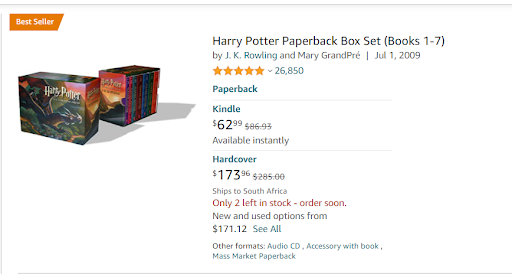
21. Promote Your Books
2019 revenue data shows that 86% of Amazon’s sellers are profitable. But, not everyone manages to earn exceptional amounts on the platform. In order to join the ranks of those that do, you have to do more than what the average seller does when it comes to promoting your books on Amazon.
Although the platform gives you instant access to their massive customer base when you join, if your budget allows, you can still do additional book promotions to boost your sales.
If your budget doesn’t allow advertising on Amazon, you can leverage the power of social media to promote the books you sell.
Share your listings on Instagram, Facebook, Twitter, and any other social profiles way you are most active.
22. Use Amazon Selling & Sourcing Software
For anyone who is new to Amazon, using a selling & sourcing software like Tactical Arbitrage can be of great help in getting your business off the ground. Most Amazon selling software tools have features to help you better understand your audience and competitors.
You will also get tools to help you increase buyer reviews using automated emails and track your overall performance on the platform.
You will get all of these and other benefits for a small monthly fee. In addition to that, you can also install Keepa, an availability-alert browser extension that alerts you every time there’s an Amazon price drop.
23. Offer Exceptional Customer Service
One of the reasons why Amazon is the leading online retailer is its commitment to providing a great user experience for each customer.
In order to be successful in their platform, you will have to adhere to equally high standards when it comes to customer service.
For instance, if you choose FBM, fast shipping and great customer service will play a pivotal role in your success (or lack thereof) on the site.
You must have a super quick turnaround, and always make sure you list your books properly, otherwise, you risk lowering your review score. If this happens, it can be extremely difficult for your business to recover.
24. Download the Mobile Seller App
Amazon’s mobile seller app has a scanner that can be used when buying books in thrift stores and other places so you know whether or not it’s worth it for you.
The app provides you with the product price, BSR (Best Seller Rank), FBA fees, and a ton of other information you need to help you make the best buying decisions and maximize your profits.
25. Seasonality Matters
As with most other things being sold online, books tend to have months that are busier than others.
The good news is that demand for books is typically high all through the year, but sellers often see an upsurge in the months of November, and this is something you should take advantage of by making sure you have plenty of listed books and timing your promotions well.
I could keep going, but these 25 tips should be more than enough to help out in the world of Amazon book selling.
Bonus Tip – Tactical Arbitrage
I know I have mentioned it a few times already, but Tactical Arbitrage is literally my favorite tool for sourcing books online.
When you are using a game-changing secret weapon like Tactical Arbitrage to help you find the best books, you are saving time and opening up opportunities.
As an entrepreneur, time is your most precious resource. Any tool that can save you time will make a valuable addition to your arsenal.
Tactical Arbitrage not only saves you time, but it also makes you more money helping to catapult you toward success.
Click here to get started with Tactical Arbitrage right now.

